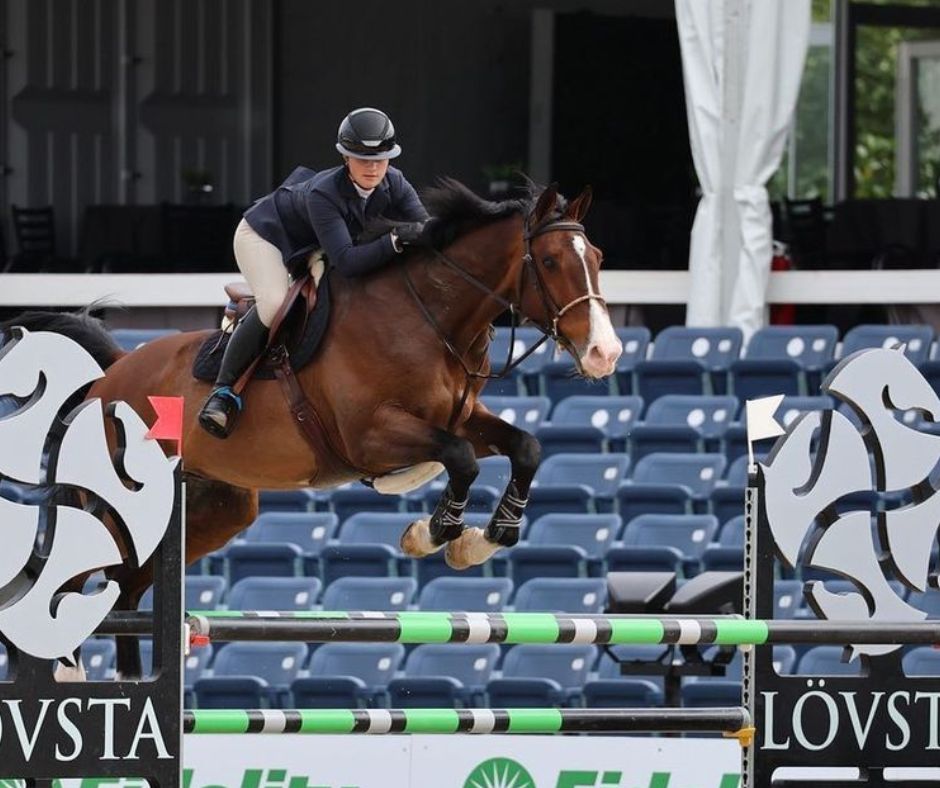
When you're in the market for a showjumping horse, it's easy to focus solely on the initial purchase price. However, experienced equestrians know that the true cost of owning a showjumper extends far beyond that first check. In this article, we'll unveil the hidden costs that every potential showjumper owner should consider before taking the plunge.
1. Specialized Equipment
Showjumping requires a significant investment in specialized equipment:
- Saddles: A high-quality jumping saddle can cost anywhere from $2,000 to $5,000 or more.
- Bridles and Bits: Expect to spend $200-$500 for a good quality bridle, with bits ranging from $50 to $200.
- Protective Boots: Essential for jumping, these can cost $100-$300 per set.
- Blankets and Sheets: Depending on your climate, you may need several types, totaling $500-$1,000.
2. Regular Veterinary Care
Showjumpers require meticulous health care:
- Routine Check-ups: Budget for at least 2-4 vet visits per year, costing $200-$400 each.
- Vaccinations: Annual vaccinations can run $200-$300.
- Dental Care: Regular floating (teeth filing) is necessary, costing $100-$300 annually.
- Emergency Care: Set aside an emergency fund of at least $3,000-$5,000 for unexpected health issues.
3. Specialized Shoeing
Showjumpers often need custom shoeing:
- Regular Farrier Visits: Every 4-6 weeks, costing $100-$250 per visit.
- Specialized Shoes: Performance horses may need corrective or supportive shoeing, which can increase costs to $300-$500 per visit.
4. Training and Coaching
Ongoing training is crucial for both horse and rider:
- Professional Training: Expect to pay $50-$100 per session for the horse, with 2-3 sessions per week being common.
- Rider Coaching: Lessons for the rider can range from $50-$150 per hour, with serious competitors taking multiple lessons per week.
5. Competition Costs
The expenses of actually competing can add up quickly:
- Entry Fees: These can range from $100 for local shows to several thousand for major events.
- Stabling: Overnight stabling at shows typically costs $50-$150 per night.
- Travel: Consider fuel costs, potential overnight accommodations for yourself, and meals.
- Show Attire: A complete show outfit (jacket, breeches, boots, helmet) can easily exceed $1,000.
6. Transportation
Getting your horse to and from competitions and training facilities is a significant expense:
- Horse Trailer: A new trailer can cost $10,000-$50,000 or more.
- Truck: You'll need a powerful vehicle to tow your trailer, which can be a substantial investment.
- Commercial Transport: If you don't have your own rig, hiring transport can cost $1-$2 per mile.
7. Insurance
Protecting your investment is crucial:
- Mortality Insurance: Typically costs 2.5-5% of the horse's value annually.
- Major Medical Insurance: Can add another 1-3% of the horse's value to your annual costs.
8. Boarding
Unless you have your own facility, boarding will be a major ongoing expense:
- Full-Care Board: In many areas, expect to pay $500-$1,500 or more per month, depending on location and amenities.
- Additional Services: Things like extra grain, supplements, or daily turnout may incur additional fees.
Conclusion
While owning a showjumper can be an incredibly rewarding experience, it's crucial to go into the purchase with your eyes wide open to the true costs involved. Beyond the initial purchase price, you should be prepared for significant ongoing expenses in equipment, health care, training, and competition.
Before making the leap, carefully evaluate your budget and make sure you can comfortably afford not just the horse, but all the associated costs of keeping a high-performance athlete in top condition. By understanding these hidden costs upfront, you can make a more informed decision and ensure that you're fully prepared for the financial commitment of owning a showjumper.
Remember, the joy of partnership with these magnificent athletes and the thrill of competition can make it all worthwhile – but only if you're financially prepared for the journey ahead.
